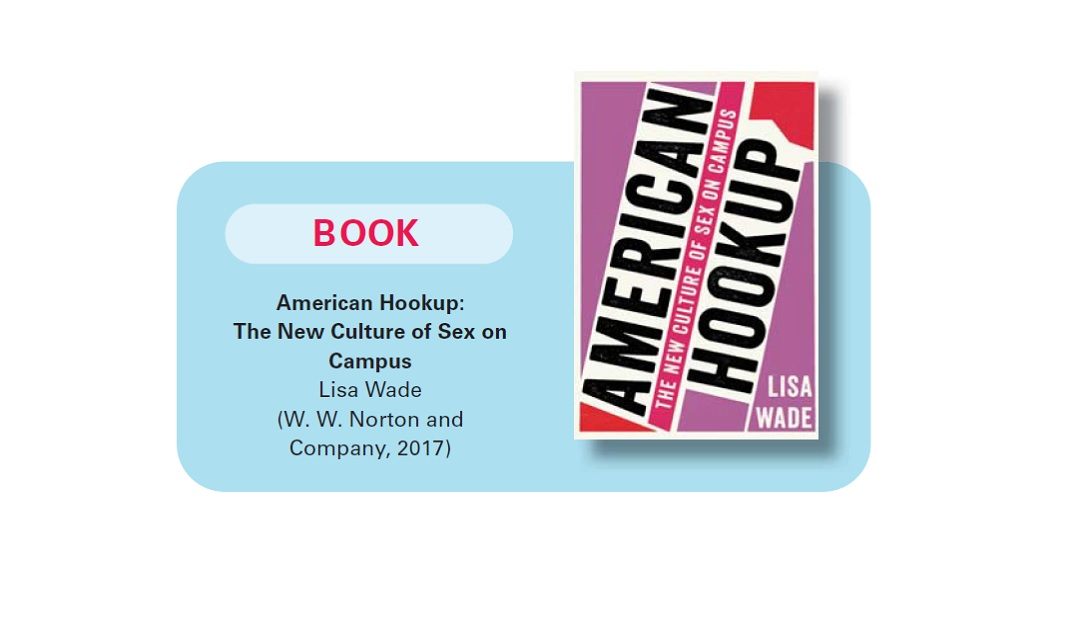This review first appeared in the Christian Research Journal, volume 40, number 03 (2017). The full text of this article in PDF format can be obtained by clicking here. For more information about the Christian Research Journal, click here.
a book review of
American Hookup:
The New Culture of Sex on Campus
by Lisa Wade
(W.W. Norton and Company, 2017)
Reading Lisa Wade’s description of the burgeoning “hookup culture” on American campuses is like turning on the overhead light in a cluttered garage that’s been ignored for years. You knew it was a mess; you just didn’t realize how big the mess was.
American Hookup turns the light on, forcing us to consider not only how big the mess is but also what its ramifications are. It’s a sobering diagnosis of a problem that shows the social, psychological, and physical dangers inherent in hookups. Yet the doctor’s final recommendations seem certain to extend, rather than to heal, the illness.
Wade, an associate professor of sociology at Occidental College, recruited 110 students to record their observations on collegiate sexual behavior and then summarized her findings in this book. The students recorded both their own behavior and that of others.
It’s to her credit that the book is specific without being salacious. Erotic encounters are viewed squarely, the student descriptions of them being especially coarse. But readers hoping to be titillated or fearing they’ll be stumbled will both be surprised at Hookup’s absence of pandering. The material is graphic rather than pornographic and, for the most part, not even remotely attractive.
Rather, it’s an analysis of a subculture more ingrained and defined than many realize, and that alone gives it merit. Its downside lies in Wade’s conclusions and recommendations that crash headlong with the Christian worldview, offending the believer’s sensibilities while offering a challenge to respond.
Hookup Culture. While student responses to the question of what “hooking up” entails are vague, we can agree it is an erotic encounter involving anything from deep kissing to intercourse that requires little to no courtship. It is engaged in with the understanding that sex means much and nothing.
It means much, in that students prep for hookups by selecting appropriate clothing, fortifying themselves with alcohol beforehand, organizing parties to facilitate the act, scrutinizing potential partners to make sure they’re attractive enough to enhance one’s social status, and bragging about their hookups afterward through endless debriefings among peers. Yet it means nothing, in that students agree never to expect a repeat of the sexual encounter, nor to become attached to the person with whom they hooked up.
Casual sex isn’t new. The data Wade quotes indicates that student promiscuity isn’t much more prevalent today than it was forty years ago. But now there’s a culture surrounding it. As she notes, “It’s the elevation of the hookup over all other ways of engaging sexually that has transformed campuses from places where there is hooking up to places with a hookup culture” (p. 49).
The mores of this culture are at least as disturbing as the behaviors it commends. Inebriation is considered essential at any hookup. Those who do not indulge can expect to be ostracized or even shunned. Sex partners are chosen as young women dance provocatively to signal availability to any interested male, provided he’s attractive, socially regarded, or both. His interest is signaled wordlessly by grinding against his girl of choice, who often looks to her friends (before even looking at her potential partner) for a signal that the man wanting to mate is a worthy stud. (An encounter with someone neither cool enough nor hot enough diminishes social status.)
An Opportunity to Shine Light in the Darkness. When mutual consent is established, the deed is done efficiently, followed by a competition to see who’s most nonchalant afterward. Postcoital coldness is admired; displays of affection or desire for something akin to a relationship shows weakness.
The reader is hardly surprised, then, at Wade’s indictment of the hookup culture as one enhancing depression, self-doubt, and unrealistic ideas about intimacy. Rather than question the wisdom of casual sex, however, she recommends not doing away with the hookup culture but doing it better. Her hope, expressed in the book’s concluding chapters, is for a new and improved hookup culture, one more loving, respectful, and inclusive. It’s at least a naive hope, grounded in the assumption that Sodom can be graphed into Eden with positive results.
Believers in 2017 may glean useful info from Wade’s work, but both Wade and the members of a culture she hopes to improve could also learn much from believers. We can, and should, explain the safety of the monogamous marital union, the height of erotic pleasure experienced in the security of that covenant, and the informed opinion of the Creator who designed the sexual union to be heterosexual, permanent, and held sacred, then declared it to be what the hookup generation seems hungry for: “Good.”
Joe Dallas is the program director of Genesis Counseling in Tustin, California, a Christian counseling service to men dealing with sexual addiction, homosexuality, and other sexual/relational problems. He is a member of the American Association of Christian Counselors and is the author of several books on human sexuality, including Speaking of Homosexuality (Baker Books, 2016).









